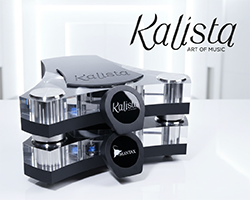WAY cables hail from Serbia. Dominic Marsh checks out two of their offerings in the form of their Silver 2 and Silver 4 Interconnects.
Goodness me, I bet you are thinking right now “Oh no, not another cable review”, but a major function of Hifi Pig is to show and highlight the latest products, it so happens then that cables are part of the rich pageant that all things Hifi encompasses and their exclusion therefore is not on our agenda. As a reviewer then, you get to see a whole raft of cables appearing on the market and after a while you can become a tad blasé when an endless parade of co-axial based black meshed cables arrives on your doorstep to be evaluated, so when something different comes along that breaks the mould you are certainly intrigued. It doesn’t have to have a massive price tag either to pique the interest and that spurs you on to look a bit further into what the product does.
Cue then the WAY Silver 2 and Silver 4 interconnects to be evaluated here.
WAY who? Indeed. This is a recently launched company headquartered in Belgrade in Serbia and like all new start up businesses they are bursting with passion and raw enthusiasm, so it was exactly that trait which I admired so much because they are happy to take criticism and appreciate praise where it’s due.
When the cables arrived they were in a sturdy wooden box with plenty of bubble wrap and each box was positively embalmed in cling film and I mean EMBALMED, so much so it took me 30 minutes for each box with a razor sharp craft knife just to remove it all. That’s what you call packing safely for transit. Incidentally, they were shipped from the Berlin branch and they have other distributors already established around Eastern Europe.
CONSTRUCTION
I have encountered some really flexible cables in my time, but never as flexible as the WAY Silver interconnects are. They are quite a chunky cable with an outside diameter of 12mm or so, but they drape across a finger like a dead snake or worm, with both verticals hanging perfectly parallel beneath the finger they are draped over. Both cables have cotton outer sleeving, the Silver 2 is dressed in a natural white, while the Silver 4 has a deep red colour coat. Terminations are in the form of KLE Harmony RCA connectors, the Silver 2 having silver plated copper plugs, while the Silver 4 sports the ‘Absolute’ pure silver variant of this connector family. Betwixt plug and cable we find silver corded whipping of around 2cm or so which makes no secret of the fact that these cables are made purely by hand with no machine involvement at all. This is further evidenced by tied on “name tags” of small rectangular strips denoting the model and serial numbers. Allowed to roam freely up and down the cable is a natural bamboo cylinder just a tiny bit larger than the cable’s diameter which is carved with the name “WAY” on it, which you think is about to fall off an end but never does. If ever you had a vision of a bespoke cable hand built from the ground up instead of being chopped off a bulk 100+ metre reel of the stuff, then this is it personified. This is further enforced by a hand written summary of the cable’s, model, length and the builder on a leaflet inside the box and the box itself is also hand made with the WAY logo imprinted into the lid.
As befits the model names, the Silver 2 has 99.99% pure silver conductors of 23 AWG or 0.26 mm² if you prefer, while the Silver 4 is wired with 99.99% pure silver at 20 AWG or 0.52 mm² conductors. Insulation and dielectric material is pure cotton fibre, said to be closest to the permittivity of a vacuum or free air, so the company says.
Prices at time of testing are Silver 2 for a 1 m pair with KLEI COPPER Harmony RCA: 199 €
and the Silver 4 for a 1 m pair with KLEI Silver ABSOLUTE Harmony RCA: 499 €
Other lengths and connectors are available at time of ordering and I believe you can order by quarter metre increments too to save money.
SOUND QUALITY
I was informed by WAY that the Silver 2 cable already has some usage while the Silver 4 was straight off production so would need a burn in period of 200 hours or so. Gulp. Armed with that information I began the evaluation with the Silver 2 cable, while the Silver 4 was left cooking away slowly on another spare system.
When I initially connected the Silver 2 cables it sounded a bit shut in and cloudy so I assumed that the “some usage” WAY had mentioned wasn’t sufficient for full burn in, so that too got another 20 hours on another system. After that period the sound had opened up and the cloudiness had vanished so I began some serious critical listening.
The Silver 2 gave a good account of itself with nothing in the sonic palette I could level any serious criticism at. Sure, it couldn’t compete with other more expensive cable confections with it’s detail resolution, clarity and bass heft, but amongst similar priced and specified cables it could hold it’s head up, with pride too I might add. It had enough bounciness and vitality to hold the interest and it certainly didn’t spill over at any time into being bland or dull, so a cable that has my close scrutiny for several hours per day over a week or so for the evaluation, without offending or annoying, gets a good rating regardless. It had a commendably quiet low noise background so the details it revealed were not masked or blurred, but the extreme top-end was rolled off, as was the extreme lower registers. Midband was this cable’s real forte and female vocals in particular which had no congestion or fuzziness at all.
Moving on to the Silver 4 cable now and the sound quality moved upwards commensurate with its price differential to the Silver 2.
Whereas the Silver 2 never did engage me completely, the Silver 4 certainly did from the first bar onwards. Powerful solid bass, a sweet and mellifluous top-end with no shortage of nuances and insights, the sound just flowed freely from the speakers. It was that ease of listening that I enjoyed the most with the Silver 4 and many was the time the listening sessions went on way past my normal bed time, because that effect of drawing me into the music made the hours seem to just fly by.
Of course, I had to show the WAY Silver 4 cables a couple of my torture tracks to see where the limitations were in the sound, so into the CD drawer went Porcupine Tree’s “Deadwing” album, which although isn’t the last word in mangling the sound beyond recognition as some music classed as “torture tracks” can be, nevertheless it presents a decent obstacle course for any system to traverse unscathed, because the better the system is, the worse it sounds I have found. With the WAY Silver 4 cable installed, it was actually a rather pleasant listen, which tells me that while the Silver 4 can reveal a plethora of details, they don’t suffer from turning the sound into a relentless, fatiguing, unforgiving kind of sound when they are severely provoked by a raw recording such as this.
CONCLUSION
So what can we conclude from this review? The Silver 2 cable offers very good value for its asking price. Neither the last word in detail resolution, nor the last word in plumbing the lower registers either, but for all that it remained constant in its performance with no shocks or surprises to be concerned over.
The Silver 4 cable was in another league entirely so it’s higher cost over the Silver 2 seemed justified. They never once offended; they did a grand job of drawing me into the music and the way they sailed their way through the Porcupine Tree album sums up all their strengths that they could provide a good rendition of what music was playing through them without spilling over into being analytical and harsh.
Build quality: 9.0/10
Sound quality: 7.7/10
Value for money: 8.6/10
Overall: 8.3/10
Build quality: 9.0/10
Sound quality: 8.3/10
Value for money: 8.3/10
Overall: 8.5/10
Dominic Marsh
At the time of review an overall score of above 8.5 (now 9) meant that the Silver 4 cables had to go on for second review. Ian Ringstead continues.
I was asked to do a follow up review to Dominic’s on these cables as he had been rather impressed by them. Now cables to me are obviously essential in a hi-fi system, but I have often felt they can be a Pandora’s Box when it comes to evaluating them. I know another well known hi-fi reviewer who hates reviewing cables because they are hard to pin down. One of my best friends is an electronics and PA speaker designer who designs large PA rigs for a company and he eschews any fancy cables and power supplies etc. as utter rubbish. I write this review with his words ringing in my ears and that he will ridicule me if I write something he doesn’t agree with. He believes copper is copper and that as long as it is pure which nearly all copper should be, then it makes no difference what fancy designs are made, and sold at extortionate prices, as he sees no justification in it and that companies are just profiteering.
You have to be an enthusiast to even consider spending a lot of money on hi-fi and especially bits of wire to connect the components together. I started out 40 years ago using just decent copper leads and gold plated connections sometimes and thought nothing more about it. Then magazines started to pick up on the importance of good connectors and cables. Some companies like Linn and Naim insisted on only using their cables as they worked best with their equipment and wouldn’t recommend other manufacturers. In fact they warned customers and dealers that they wouldn’t be liable for damage or problems if other cables were used. Now this might seem rather puritanical these days, but it was a serious issue back in the eighties.
Way use the highest purity silver (99.99%) they can obtain, sourced from here in the UK as we are the only country in the world to guarantee its purity and have stringent quality controls and regulations. Way cables currently feel silver is the best conductor to use, but are open to other materials if they find them to be better in the future. They use pure cotton as the only dielectric and outer jacket material for all their cables. This cotton is produced to their specification (density, thickness and structure). They are proud of their Unique extreme damping system™ from sound vibrations, noise and RFI/EMI interferences, and Way cables are very flexible despite the fact that they have solid-core conductors. This flexibility I feel is unique to their cables and they feel nothing like any other cable I have come across before. Like my colleague Dominic said they are like a worm when you handle them being incredibly flexible and light in weight.
The cables take at least eight hours per cable to manufacture by hand, I’m told and then they are fully tested and checked out..
I initially tried the cheaper basic model Silver 2 between my CD player and passive pre amp, and then the Silver 4. The Silver 2 was very good and certainly opened up the sound of my system with what appeared to be a much lower noise floor. The Silver 4 built on the qualities of the 2 and was even more refined and clearer with a beautiful presentation and incredible detail. I listened to CDs I thought I knew inside out, but was amazed at the extra detail and clues in the recordings I had previously not heard, or had been disguised in some way. I then used the Silver 4 between my CD player and the passive pre and the Silver 2 between my pre and the power amp.
I tried several CDs of differing music and they all sounded superb. My ears were not lying to me and my wife also commented on how good they sounded in comparison to my usual cheaper cables. This is not a criticism of these other brands which I find to be very good value at under about a £100, but the Way cables were in a different league.
Compared to any other cable I have heard in my system the Way cables are definitely the best I have come across and offer real value for money. I reckon they are the Way forward! (Pun intended)
Sound Quality: 8.9 /10
Build Quality: 9/10
Value for money: 8.5/10
Overall rating: 8.8/10
Ian Ringstead























































































































































































































You must be logged in to leave a reply.